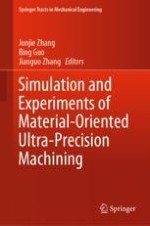2019 | OriginalPaper | Buchkapitel
Cutting Mechanism and Surface Formation of Ultra-Precision Raster Fly Cutting
verfasst von : Guoqing Zhang, Suet To
Erschienen in: Simulation and Experiments of Material-Oriented Ultra-Precision Machining
Verlag: Springer Singapore
Aktivieren Sie unsere intelligente Suche, um passende Fachinhalte oder Patente zu finden.
Wählen Sie Textabschnitte aus um mit Künstlicher Intelligenz passenden Patente zu finden. powered by
Markieren Sie Textabschnitte, um KI-gestützt weitere passende Inhalte zu finden. powered by
